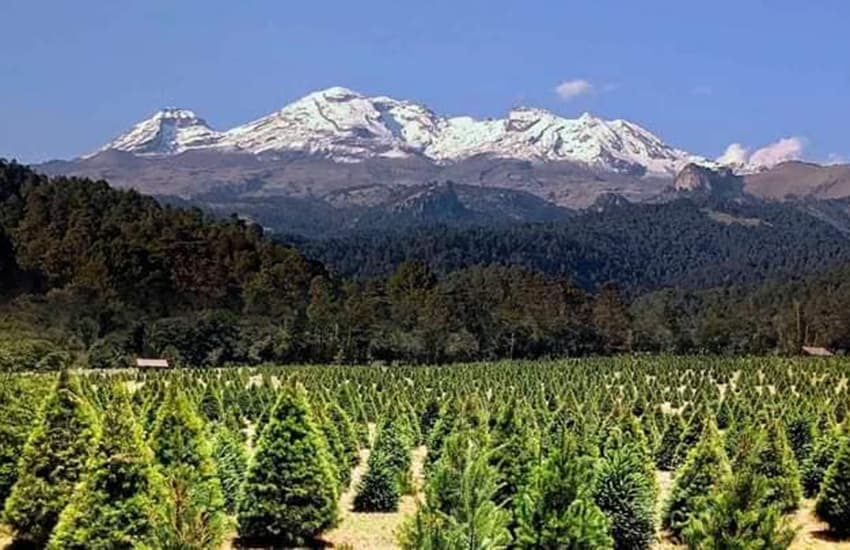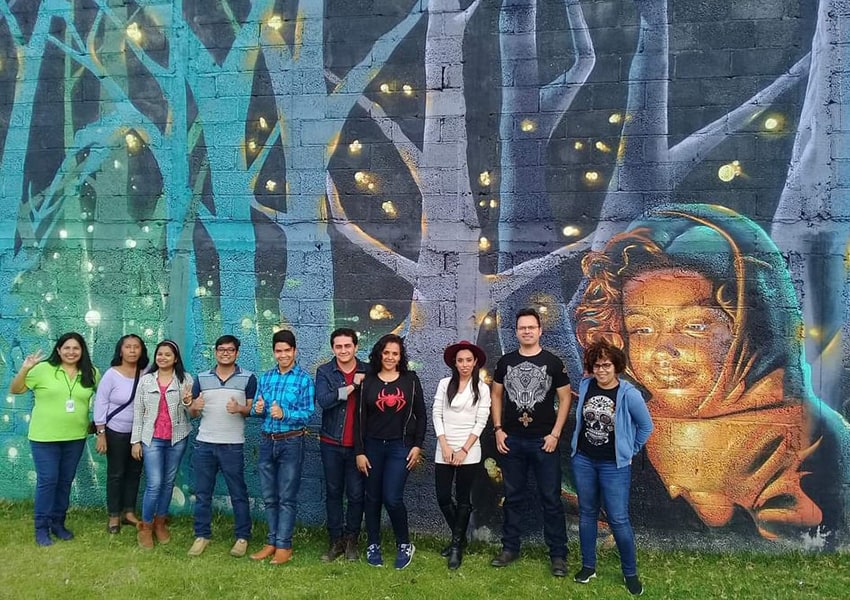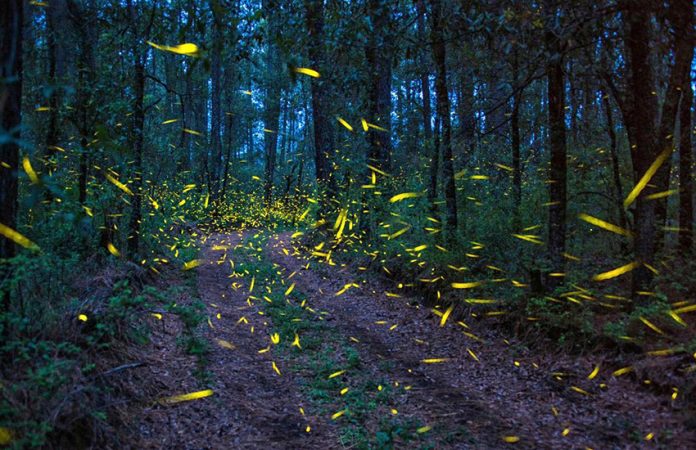Dancing pinpricks of light on a summer night are a treasured memory of my childhood in New Jersey. Fascinated, we kids caught fireflies (we called them “lightning bugs”) in a glass jar with the idea of making a lantern.
Mexico has them too, but like in the rest of the world, anecdotal evidence seems to indicate that populations have seriously diminished or have even been eradicated in some areas. Science has not yet backed that assertion up, but on-the-ground reports from the “firefly tourism,” sector — i.e. taking people to forests to see what I saw in my backyard — seems to support it.
For the moment, Mexico’s firefly tourism centers on Nanacamilpa, Tlaxcala, at the Santuario de las Luciérnagas (Firefly Sanctuary), a 200-hectare reserve in an isolated valley two hours northeast of Mexico City.
Locals there tell stories of entire trees being lit up with the insects in the past in a way that doesn’t happen today, but even so, the shows the fireflies offer are still worthy of awe.
The vast majority of the lights are those of males flying through the air trying desperately to attract the attention of the relatively few receptive females on the ground on any given night. Even worse, males have only a roughly 90-minute window in the early evening to get the job done.

The main species in Tlaxcala is Photinus palaciosi (formerly Macrolampis palaciosi), which emits a greenish glow created when its biochemical substance called luciferin interacts with oxygen. It is one of about 2,000 species of fireflies found worldwide and 164 found in Mexico.
Most fireflies do not put on spectacular nighttime shows. The glow originally evolved to warn predators that they are toxic, with a few species using it for mating.
Firefly season at the Tlaxcala sanctuary attracts thousands of people each year. The state puts safeguards in place to try and keep visitors’ impact to a minimum. Firefly observers are limited to 27 watching stations along 12 paths, and there are only certain official tour concessionaries certified by the government: Canto del Bosque, Xoletilandia, Las 4E, Aires del Bosque and Glamping Octli.
Reservations are necessary to access the park, which is limited only to certain hours. Visitors are not allowed to leave the proscribed paths nor use lights, cell phones, reflective clothing or insect repellent. Last year, the sanctuary was closed due to Covid-19, but this year it was reopened to 30% capacity for the season running from mid-June to mid-August.
It is very difficult to get reservations to visit, says Mario Bastida of Canto del Bosque, both because of the limited capacity and due to the fact that many of the available spaces have taken by those who had to cancel trips in 2020. Peter Winckers of Azteca Travel Tours Art recommends making a reservation for mid-week to have the best chance of getting a slot and getting to visit with fewer crowds.
Firefly tourism is a very recent phenomenon in Mexico. As late as 2012, the fireflies of Tlaxcala were unknown to the general populace and barely known to the scientific community. Of course, they were well-known to locals, who have childhood memories similar to mine.

It is not known how this tourism started in Nanacamilpa, but true to Mexico, there are multiple stories with multiple people taking credit. Organized tours were being done before 2012.
When the number of visitors per season reached about 4,000, the Tlaxcala Tourism Ministry began to promote the activity. Only five years later, those numbers would swell to almost 100,000, forcing the same agency to scale back out of concern for the habitat.
The fireflies remain the number two attraction for the state, which has prompted an explosion of restaurants, hotels, cabins (both rustic and luxurious) and more in a corner of a state no one paid attention to before. Nor has the success gone unnoticed — both by the neighboring state of Puebla and by México state.
The natural range of Photinus palaciosi actually extends south into these states, specifically to the holm oak, pine and fir forests of the western slope of the Iztaccihuatl and Popocatépetl volcanoes. Forests in these states suffered extreme degradation in part due to their proximity to Mexico City, but reforestation efforts of the past decades have slowly brought firefly populations back.
Since 2017, there have been efforts to add firefly tourism to already existing ecotourism efforts. The Ejido Santa Rita Tlahuapan in Puebla started its own firefly sanctuary open to the public, announcing many of the same measures that are in place in Tlaxcala. In Amecameca, México state, the main viewing option is the Bosque Esmeralda Sanctuary. The success of these fledgling enterprises on communal ejido lands has sparked talk of a “Firefly Route.”
The meteoric rise of firefly tourism in these forests has also prompted concerns about sustainability: large crowds mean more foot traffic in the woods and more building of tourism infrastructure. In addition, little is known about the life cycle of this insect — how long they live, where and how long they are underground as larvae and the possible effects of light and chemical pollution.
Many of the rules imposed by the firefly sanctuaries are precautions, with no knowledge of how effective they are.
It is known that females lay between 100 and 150 eggs and that the species needs areas with abundant leaf litter, moist places to burrow, foods such as snails and slugs and other elements of a healthy native forest.
On the plus side, firefly tourism increases interest in the conservation and rehabilitation of the holm oak/pine/oyamel fir forests that were decimated after the Conquest and are still in danger in the present day. In Tlaxcala, the insects have brought a major source of income with them where there was almost nothing.
In Puebla and México, the fireflies are a welcome addition to a number of ecotourism efforts that have been developing here for decades. Winckers recommends the ones in Tlaxcala and Amecameca as they have better amenities such as restaurants and bathrooms as well as good local guides who take better care not to disrupt the reproduction cycle.
Leigh Thelmadatter arrived in Mexico 18 years ago and fell in love with the land and the culture in particular its handcrafts and art. She is the author of Mexican Cartonería: Paper, Paste and Fiesta (Schiffer 2019). Her culture column appears regularly on Mexico News Daily.
